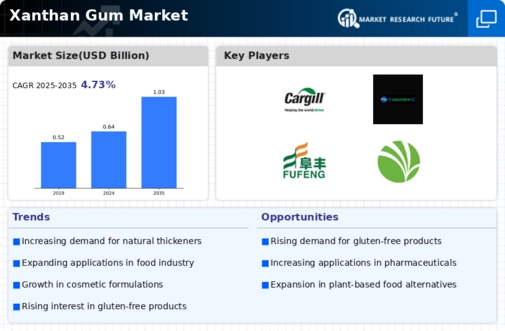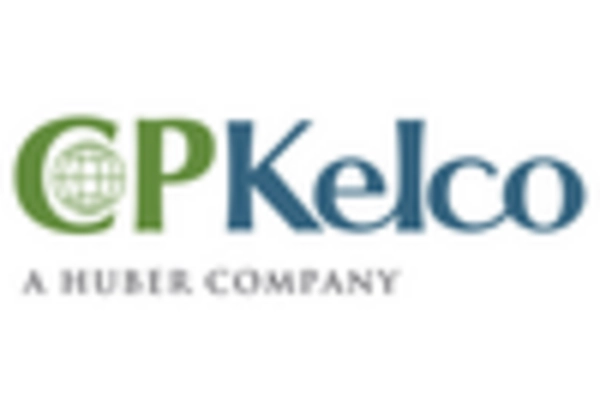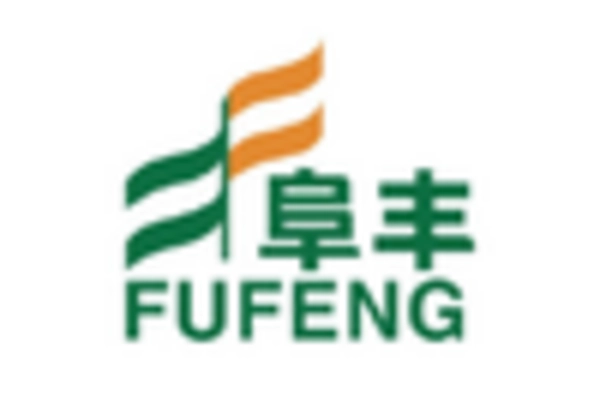Rising Demand in the Food Industry
The Xanthan Gum Market is significantly influenced by the escalating demand for xanthan gum in the food sector. As a widely used food additive, xanthan gum serves as a thickener, stabilizer, and emulsifier in a variety of products, including sauces, dressings, and gluten-free baked goods. The increasing consumer preference for gluten-free and clean-label products is propelling the market forward, with projections indicating a growth rate of approximately 7% in the food segment. This trend is further supported by the rising awareness of health and wellness, leading manufacturers to seek natural and functional ingredients like xanthan gum to enhance product quality and consumer appeal. Consequently, the food industry remains a pivotal driver of growth within the xanthan gum market.
Growth in Pharmaceutical Applications
The Xanthan Gum Market is witnessing an expansion in its applications within the pharmaceutical sector. Xanthan gum is utilized as a thickening agent and stabilizer in various drug formulations, including suspensions and emulsions. The increasing demand for controlled-release drug delivery systems is likely to bolster the market, as xanthan gum's unique rheological properties can enhance the bioavailability of active pharmaceutical ingredients. Recent data indicates that the pharmaceutical segment is expected to grow at a compound annual growth rate of around 6% over the next few years. This growth reflects a broader trend towards innovative drug formulations that prioritize patient compliance and therapeutic efficacy, thereby solidifying xanthan gum's role in modern pharmaceutical development.
Increasing Use in Personal Care Products
The Xanthan Gum Market is experiencing a notable rise in the incorporation of xanthan gum within personal care products. This trend is largely driven by the ingredient's ability to enhance texture and stability in formulations such as lotions, shampoos, and creams. As consumers increasingly seek products that offer both efficacy and sensory appeal, manufacturers are turning to xanthan gum for its thickening and emulsifying properties. The personal care segment is projected to account for a significant share of the market, with estimates suggesting a growth rate of approximately 5% annually. This growth is indicative of a broader trend towards natural and multifunctional ingredients in personal care, positioning xanthan gum as a key player in the evolving landscape of cosmetic formulations.
Technological Advancements in Production
The Xanthan Gum Market is benefiting from ongoing technological advancements in the production processes of xanthan gum. Innovations in fermentation technology and extraction methods are enhancing the efficiency and yield of xanthan gum production, thereby reducing costs and improving product quality. These advancements are likely to make xanthan gum more accessible to a wider range of industries, including food, pharmaceuticals, and cosmetics. As production techniques evolve, the market could see a shift towards more sustainable practices, aligning with the growing consumer demand for environmentally friendly products. This technological evolution is expected to contribute to a more competitive landscape, potentially increasing the market share of xanthan gum across various applications.
Expansion of Application in Oil and Gas Industry
The Xanthan Gum Market is also experiencing growth due to its expanding applications in the oil and gas sector. Xanthan gum is utilized as a viscosifier in drilling fluids, enhancing the efficiency of drilling operations by improving the stability and performance of the fluids. The increasing exploration and production activities in unconventional oil and gas reserves are likely to drive demand for xanthan gum, as it plays a crucial role in optimizing drilling processes. Recent estimates suggest that the oil and gas segment could witness a growth rate of around 4% in the coming years. This trend underscores the versatility of xanthan gum and its importance in supporting the energy sector's operational efficiency.


















Leave a Comment